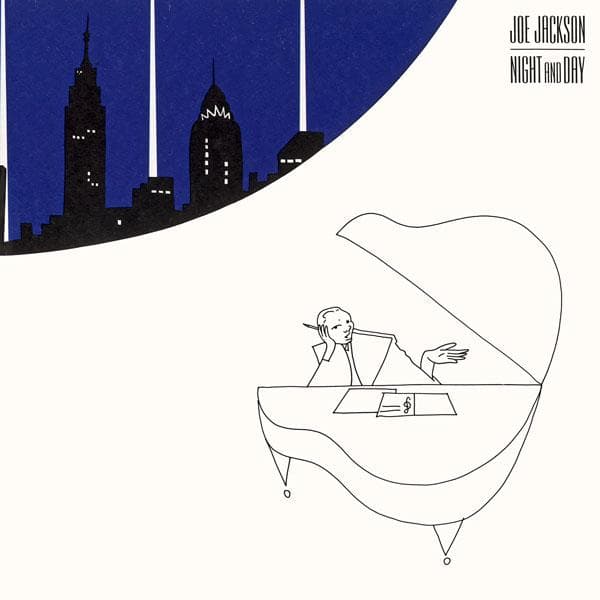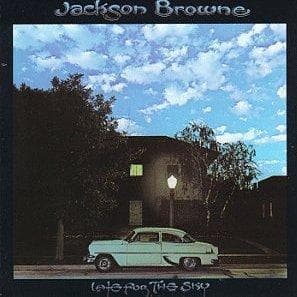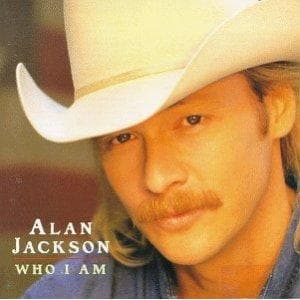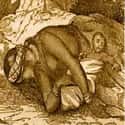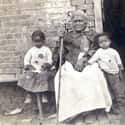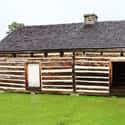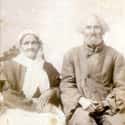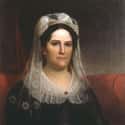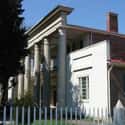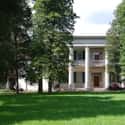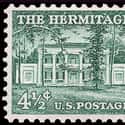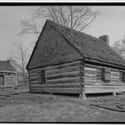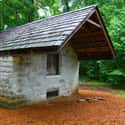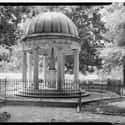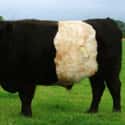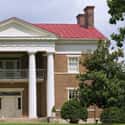-
(#1) In Spite Of Jackson's Policies, A Young Native American Boy Was Once A Resident Of His Home
Many people think of the Trail of Tears when they remember what they learned about Andrew Jackson in history class. In addition to the forced removal of Native Americans, he also led troops in conflicts that ravaged and devastated entire villages.
It was during one such raid in Alabama that Lyncoya was discovered. The infant Creek boy was found in the arms of his fallen mother and brought to Jackson. Jackson took pity on the child; some speculate it was because he himself was orphaned as a young man. Whatever the reason, Jackson brought the little boy back to the Hermitage with him.
Lyncoya lived there with the Jackson family until passing from tuberculosis around the age of 17. He was apprenticing as a saddle maker at the time since West Point had denied him entry on account of his race.
-
(#2) The Graveyard For The People Jackson Enslaved Has Still Not Been Found
At any given time, there were usually about 140 enslaved people living on the grounds of the Hermitage. A few of the cabins they were housed in have been preserved and are still open to visitors, and many small artifacts have been recovered by archaeologists in the years since the property became a historical site.
One thing has yet to be discovered though: the graveyard for the enslaved people. With more than 500 enslaved individuals linked to the property over its active years, it's hard to believe the cemetery's location is still a mystery.
Research teams have used historical records, cadaver dogs, and probing rods to try to locate the graves, all with inconclusive results.
-
(#3) One Former Enslaved Person Is Buried In The Garden
Alfred Jackson lived at the Hermitage longer than any other person. He was in charge of the horses and wagons of the plantation. Alfred was even a tour guide when the Hermitage opened as a museum; he had stayed on after emancipation as a tenant farmer. His home, known to visitors as "Alfred's Cabin," sits very close to the main house.
He passed in 1901 and was buried in the mansion's garden near where Andrew and Rachel Jackson and the rest of their family lie.
-
(#4) Some Of The Enslaved People Stayed To Work After Slavery Was Abolished
Some of the enslaved people at the Hermitage saw the chaos of the Civil War as their chance at freedom, escaping to downtown Nashville a few miles away. Others stayed until the Emancipation Proclamation was issued, choosing new last names for themselves before picking up and leaving to start a new life.
But some chose to stay and were offered positions as tenant farmers; Alfred was one of those. Several other families chose to stay, although records from the time do not include a full list of the inhabitants of the Hermitage.
-
(#5) The Hermitage Was Full Of The Adopted Children Of The Jacksons
The Jacksons didn't have any biological children, but they still raised a house full of kids. They officially adopted Andrew Jackson Jr. from Rachel's brother; his twin, Thomas Jefferson Donelson, stayed with his parents. The couple also adopted Andrew Jackson Hutchings, whose parents passed when he was very young.
The practice of guardianship was very common at that time. A guardian was named by a child's parents so that, in the event of the father's passing, someone could care for the children (even if the mother was still alive). Andrew Jackson was the guardian or adopted father of around eleven children who lived at the Hermitage at least part-time.
-
(#6) The Hermitage Was Untouched During The Civil War
While other plantation homes in the Nashville area were left scarred by the Civil War, the Hermitage managed to survive intact. The Belle Meade Plantation on the south side of the downtown area was not raided since its owners raised racehorses and not much-needed crops. Other farms in the area were not so lucky.
It's possible the Hermitage was not touched because it was so far out of the way; it sits miles outside of the Nashville city center, and the Union Army didn't spread too far into the countryside.
-
(#7) The Driveway Was Shaped Like A Guitar Long Before Nashville Was Called Music City
The city of Nashville is known for its country music scene and colorful downtown district. But back in 1804, when Andrew Jackson first purchased the land on which he planned to build his plantation, Nashville was just a small frontier town.
The exact reason for the unusual shape of the driveway isn't known. But one possibility is that Andrew and Rachel wanted a long and elegant entryway for visitors, worthy of such a grand home. The guitar shape simply became a fitting coincidence years later.
-
(#8) The Location Of The Main House Was Rachel Jackson's Idea
There is something slightly different about the Hermitage compared to other Southern plantations; it's a subtle distinction, one most visitors wouldn't even notice. Andrew Jackson wanted, as most homeowners did, to build his regal estate at the top of one of the sloping hills on the property. He wanted a grand view and a lookout point, but his wife wanted a nice shady spot that was located in a lower area of their land.
In the end, Andrew had the mansion built exactly where Rachel requested, which is where the main house still sits.
-
(#9) The First Hermitage Was A Tiny Log Cabin
Andrew Jackson purchased the land the Hermitage sits on in 1804. When he bought the acreage from Nathaniel Hays, it already had two small cabins on it. Jackson wanted to build a proper home for Rachel and himself, but it took him years to do so. The two log cabins were tiny, and the nine enslaved people Jackson already owned lived together in the second one-room structure.
After the completion of the main house, the Jacksons' cabin was transformed into another residence for the enslaved workers. Fancy decorations, like the wallpaper, were removed to make it just another plain dwelling.
-
(#10) Two Natural Springs Exist On The Property
Andrew Jackson is thought to have picked this particular piece of land for his permanent home partly because of the two natural springs located on the property. They produce clean, clear, and icy cold water that both the Jackson family and the people they enslaved slaves would have put to good use.
Likely, the cold springs would have served as a place to keep certain food items chilled, acting like a refrigerator.
-
(#11) Former Staff Believed The Hermitage Was Haunted
There are many ghost stories about the plantation. In the late 1890s, the Ladies Hermitage Association reportedly grew convinced the place was haunted. They took to staying up at night to witness supernatural phenomena and reportedly saw and heard various apparitions.
Along with the ghosts of former servants and enslaved people, the women claimed the spirit of Andrew Jackson himself still rode across the grounds.
-
(#12) The Hermitage Still Raises Cattle And Grows Several Types Of Crops
In its heyday, the Hermitage produced crops like cotton, hemp, and maybe even tobacco to sell in nearby Nashville. Its location on the Cumberland River provided an easy method of shipping the goods to other nearby cities.
Most of the land that the Ladies Hermitage Association owns (about 1,100 acres) is still used for farm production, with cattle raised alongside cotton, corn, and other goods.
-
(#13) There Is A Second Mansion On The Property Called Tulip Grove
Andrew Jackson Donelson, Rachel Jackson's nephew, was Andrew Jackson's private secretary in the White House. He built a home for himself and his wife on a piece of land adjoining the Hermitage and named it Tulip Grove after the tulip-shaped blossoms on the poplar trees nearby.
Construction was finished in 1836; the mansion was done in a Greek Revival style with Doric columns in the facade. After Andrew Jackson Donelson sold the property, it passed through several hands and eventually came into the care of the Ladies Hermitage Association.
New Random Displays Display All By Ranking
About This Tool
The Hermitage is a historic plantation that was once owned by Andrew Jackson, the seventh president of the United States, and opened to the public in 1889. Andrew Jackson was once so respected, but his behavior and the huge plantation were greatly controversial. Because he strongly supported slavery and profited from it, Jackson owned more than 160 slaves, they worked for him on the Hermitage and even the White House.
Now the Hermitage is one of the oldest and largest historical site museums in the United States, as well as the most iconic landmark. Each room in the Hermitage has its own story and witnessed the history of slavery. There are random 13 details about the plantation which most people do not know.
Our data comes from Ranker, If you want to participate in the ranking of items displayed on this page, please click here.


